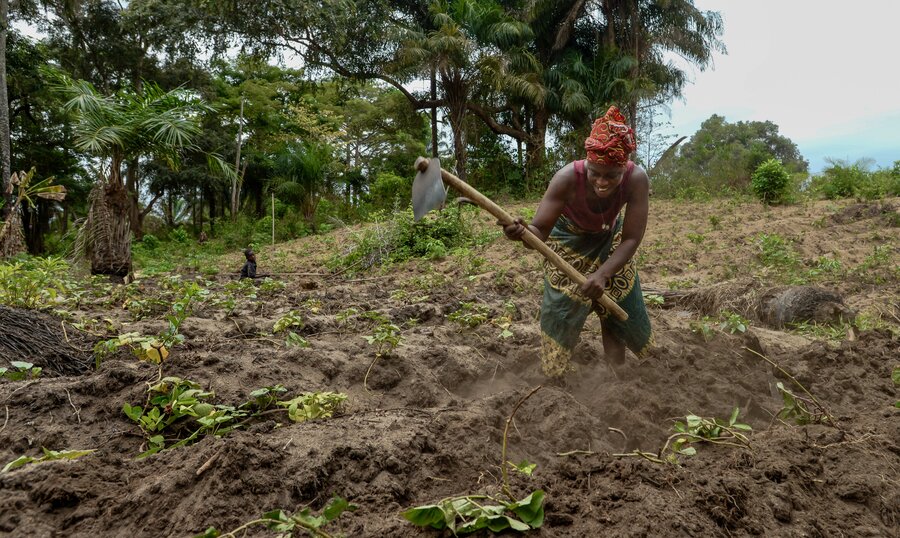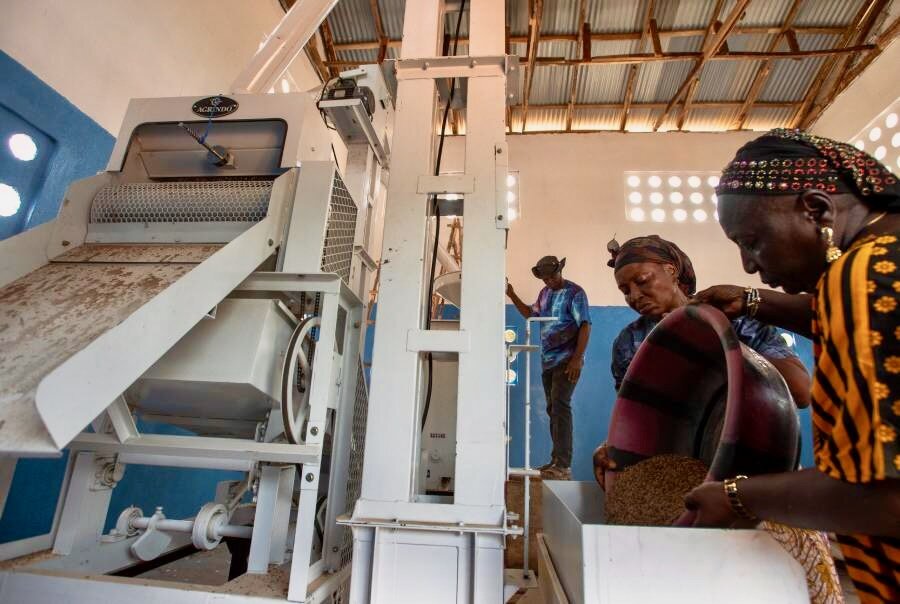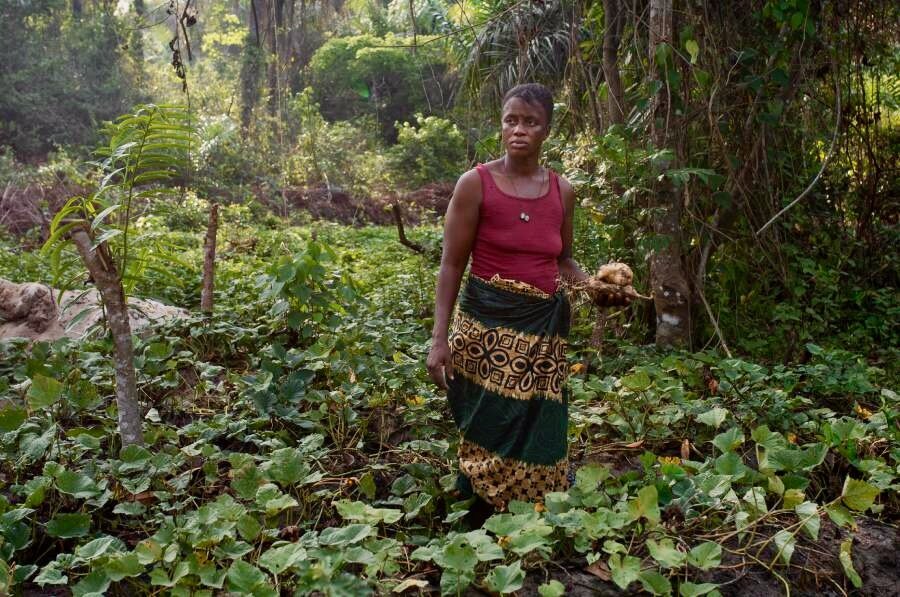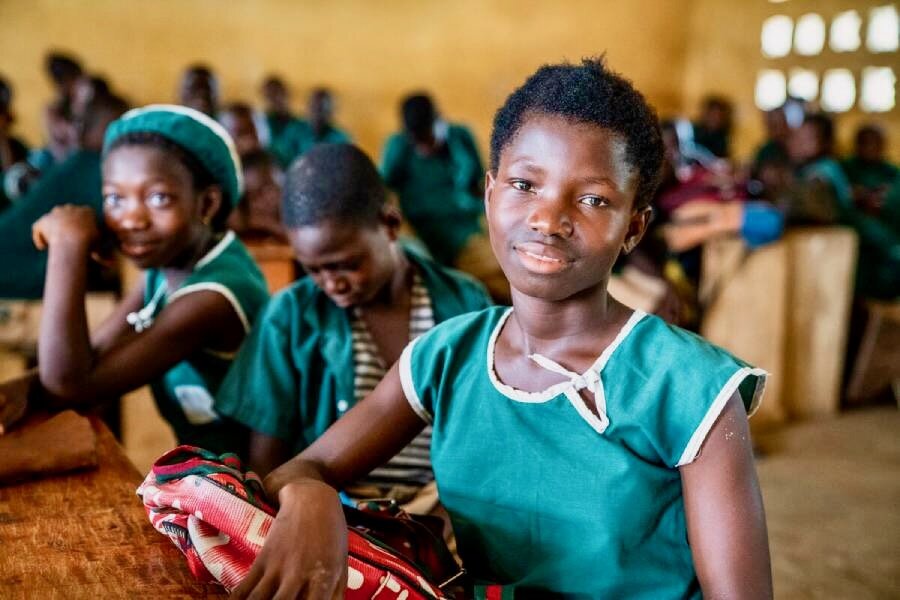Home-grown solutions: Sierra Leone’s school meals start a new chapter

In Sierra Leone’s northern Kambia district, the morning sun casts a golden hue over a milling hub, where farmer Isata Feika Sesay fills sacks with locally produced rice - helping to meet an ambitious national goal.
The amber-coloured grains, milled with a machine donated by the World Food Programme (WFP), will be heading to some of the more than 1,000 government-assisted primary schools nationwide, supplying a key ingredient in hearty, WFP-supported dishes served up daily to pupils.
For decades, Sierra Leone’s school meals were powered by food shipped from faraway lands: bags of rice and beans arriving at the Queen Elizabeth II Quay in the capital Freetown, and destined for classrooms across the country. In the past, WFP imported nearly 90 percent of the food used in Sierra Leone’s National School Feeding Programme. That’s over 5,000 metric tons of rice and beans each year.
But today, a quiet revolution is taking root in the soil of local farms like Sesay's - thanks to the Government’s Feed Salone agenda, aimed at transforming the country's food systems to achieve food security and boost the agricultural sector. A key component is a WFP programme that sources school meals from smallholder farmers.

Now 40 percent of the food served in schools is grown right here. WFP and the Government hope to increase that figure to 60 percent in the coming years, further investing in a system that is already delivering paybacks. Last year, Sierra Leone's farmers received over US$2.4 million out of the US$6 million received through WFP purchases for school meals. By sourcing the food in-country, we also significantly reduce import costs and empower local communities, which largely rely on farming for a living.
“Buying locally boosts domestic production, which in turn helps to keep some of the 70 percent of our farming population employed and earning more,” says Mervyn Chiumia, WFP Sierra Leone’s head of school meals.
From field to fork: A community effort

Sesay, a mother of six who grows rice, groundnuts and cassava on a sizeable 450-hectare plot, is seeing those benefits as well. “Before, we struggled to find markets for our produce,” she says, standing beside her neatly packaged sacks of rice. “Now, WFP buys from us. Our children eat what we grow. It’s a blessing.”
Sesay counts among 12,000 smallholder farmers in Sierra Leone from whom we procure food for school meals. “With WFP we do bulk sales,” she says, allowing growers like herself to avoid intermediaries who can offer unfavourable terms for their crops.
The transformation didn’t happen overnight. WFP has been working closely with Sierra Leonean authorities, along with local cooperatives and other actors, to build a community-based supply chain. We are also collaborating with farmers and schools to vary what young pupils eat in class - moving beyond the country’s staple rice to include vegetables and other nutritious foods.
In Bonthe and Karene districts, respectively in southern and northwestern Sierra Leone, for example, orange-fleshed sweet potatoes - rich in Vitamin A - are now part of the school menu, thanks to farmers like Sebatu Kpana.

A mother of five, Kpana has long relied on growing cassava to support her family. “Farming has always been my passion,” says Kpana, who heads the mostly women God’s Favor Farmers Association, working to build sustainable livelihoods through agriculture.
With WFP support, Kpana and her group were trained to grow the orange-fleshed sweet potatoes, learning not only improved farming techniques - like proper post-harvest handling and storage - but also about the health benefits of the tuber, especially for children.
“The children love the sweet potatoes,” Kpana says, holding her harvest in her hands as she stands in her field. “They’re healthy, and they come from our own land. That keeps us going.”
More than just a meal
The impact of Sierra Leone’s shift to local procurement goes far beyond nutrition. “Education outcomes are improving, with well-fed children attending school more regularly and performing better,” says WFP’s Chiumia.
“When children eat nutritious, locally grown food, they are healthier, more attentive and more likely to stay in school,” he adds. “This is what Feed Salone is all about - no child going hungry, no farmer left behind.”
Farmer Sesay’s rice goes to primary schools like the one in Kambia’s Dar Es Salaam community, where volunteer cook Fatmata Kamara watches her 11-year-old daughter Mariama join her classmates for lunch.

“She told me, ‘Mama, we eat the local rice and potato for lunch.’ That’s pride,” says Kamara, eyes shining, of her daughter - who wants to be a nurse when she grows up. “That’s progress.”
“The local rice is more nutritious than the imported white rice, as it is parboiled,” Kamara adds of a process that enriches the rice with nutrients from the husk and skin. It offers another example, she and others believe, of how some the most powerful solutions are grown right at home.
WFP’s School Meals Programme is funded by Germany, Iceland, Japan, private donors, Republic of Korea and the Government of Sierra Leone
